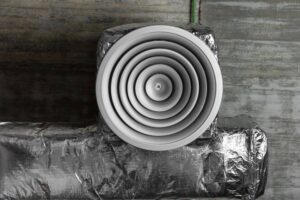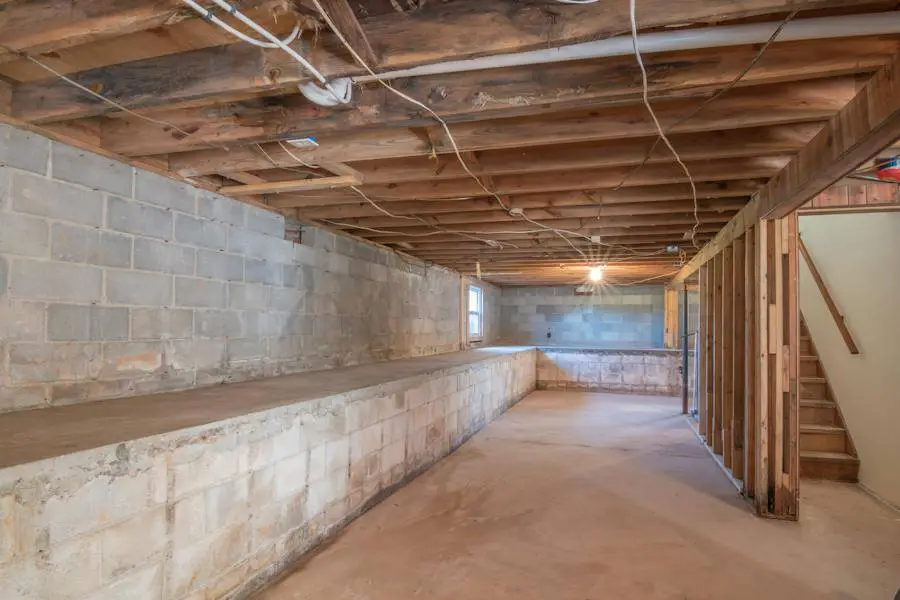Table of Contents
The concept of using a septic tank as a storm shelter may seem unusual, but it is a viable and cost-effective option that many homeowners are turning to.

This comprehensive guide will delve into all aspects of septic tank storm shelters from their benefits, design, installation process, safety measures, maintenance, and legalities.
The Basics of Septic Tank Storm Shelters
Understanding Septic Tanks
Septic tanks are primarily used for waste management in homes not connected to public sewer systems. These robust structures are typically constructed from concrete, fiberglass, or plastic.
Their design is intended to withstand the pressure of being buried underground and the force exerted by wastewater.
The material of construction and structural integrity make them potential candidates for conversion into storm shelters.
Conversion to Storm Shelters
A septic tank can be converted into a storm shelter with some modifications.
These include adding vents for air circulation, reinforcing the structure for added safety, and installing an accessible entrance and exit.
It’s crucial to ensure these modifications are done correctly to create a safe and effective storm shelter. Here are some key aspects to consider:
Ventilation: Proper ventilation is crucial for an underground shelter. This includes installing vents for air circulation that are also designed to prevent water from entering the shelter during a storm.
Reinforcement: While septic tanks are strong, additional reinforcement may be necessary to ensure they can withstand the force of a tornado or severe storm.
This could involve adding steel bars or other reinforcing materials to the structure.
Entrance and Exit: It’s crucial to install an accessible entrance and exit. These should be easy to open from the inside but secure enough to prevent unauthorized access from the outside.
They should also be designed to be debris-resistant to ensure occupants can exit after a storm.
Interior Design: The interior of the storm shelter should be comfortable and practical. This includes installing seating, storage for emergency supplies, and possibly even a toilet for extended stays.
Benefits of Using Septic Tanks as Storm Shelters
Durability and Strength
Septic tanks are designed to withstand the pressure of being buried underground and holding large volumes of liquid.
This makes them incredibly durable and strong, which are essential features for a storm shelter that needs to protect against high winds and flying debris.
Cost-effectiveness
Converting a septic tank into a storm shelter can be more cost-effective than building a traditional storm shelter from scratch.
The main expense will be the modifications needed to make the tank safe and comfortable as a shelter.
Versatility and Reusability
Another benefit of using septic tanks as storm shelters is their versatility and reusability.
If you ever decide to move or no longer need the storm shelter, the septic tank can be repurposed for other uses or relocated to a new property.
This flexibility makes it an excellent long-term investment.
Eco-Friendly Option
Septic tanks turned into storm shelters can also be considered an eco-friendly option.
By repurposing existing materials instead of creating new structures from scratch, you are reducing your environmental impact.
This aligns with sustainable practices and contributes towards waste reduction.
Designing a Septic Tank Storm Shelter
Choosing the Right Size
The size of your storm shelter will depend on the number of people it needs to accommodate. As a rule of thumb, each person needs at least 10 square feet.
When selecting a septic tank, consider not only its dimensions but also its shape and how it will fit into your property.
Ventilation and Air Circulation

Proper ventilation is crucial in a storm shelter to ensure a constant supply of fresh air. This can be achieved by installing vents or an HVAC system.
It’s also important to consider how to seal these vents to prevent water or debris from entering during a storm.
Installation Process
Site Selection and Preparation
Choosing the right location for your storm shelter is essential. It needs to be easily accessible, preferably close to the house, but not underneath large trees or structures that could collapse onto it.
The site will need to be prepared by excavating the area and ensuring the ground is level.
Professional Installation vs DIY
While it’s possible to install a septic tank storm shelter yourself, hiring professionals is recommended.
They will have the necessary experience and equipment to ensure the shelter is installed safely and correctly.
Safety Measures
Structural Integrity Checks
Regular checks of the structural integrity of the storm shelter are vital.
This includes inspecting the walls, roof, door, and vents for any signs of damage or wear that could compromise the shelter’s effectiveness.
Emergency Exit Strategies
Having an emergency exit strategy is crucial. This should include a robust and easy-to-operate door system and potentially a secondary exit point in case the main entrance is blocked.
Maintenance of Septic Tank Storm Shelters
Regular Inspection
Conduct regular inspections to check for any potential problems. Look out for cracks in the structure, blockages in the vents, or issues with the door. Any problems should be addressed immediately.
Cleaning and Repair
Keep the shelter clean and free from debris. Regular cleaning will also give you a chance to check for any damage.
Any necessary repairs should be carried out promptly to ensure the shelter remains safe and functional.
Pest Control
Pests can pose a significant problem for underground shelters, including those made from septic tanks.
Regular pest control measures should be implemented to ensure the shelter remains free from infestations that could cause damage or make the space unhealthy for humans.

Moisture and Mold Prevention
Given their underground location, septic tank storm shelters can be prone to moisture and mold issues.
Implementing measures to prevent excessive moisture and routinely checking for signs of mold is essential.
This may involve using dehumidifiers, ensuring adequate ventilation, and using mold-resistant materials in the shelter’s interior.
Emergency Supplies Stock
A well-maintained storm shelter should also have a stock of emergency supplies.
This includes food, water, medical kits, flashlights, batteries, and other essential items that would be needed in the event of a storm.
Regularly checking and replenishing these supplies ensures that your shelter is always ready for use when needed.
Legalities and Permits
Building Codes and Regulations
Before installing a septic tank storm shelter, check your local building codes and regulations. Some areas have specific requirements for storm shelters, including their construction, location, and size.
Obtaining Necessary Permits
You will likely need to obtain a permit before installing your storm shelter. This usually involves submitting your plans to the local building department and having them approved.
It’s crucial to ensure you have all the necessary permissions before beginning work.
Conclusion
Using a septic tank as a storm shelter is a practical and cost-effective solution for those looking for added protection during severe weather.
With careful planning, professional installation, and regular maintenance, a septic tank can provide a safe haven for you and your family when you need it most.
Always remember to check local regulations and seek professional advice to ensure your storm shelter meets all safety standards.









